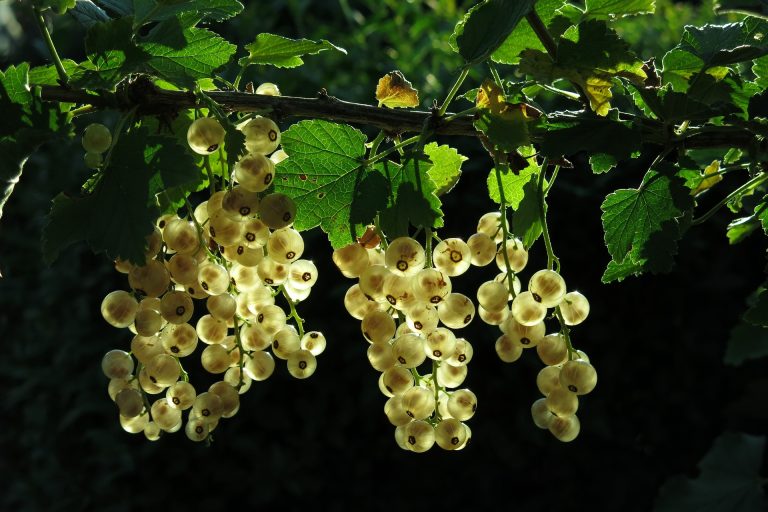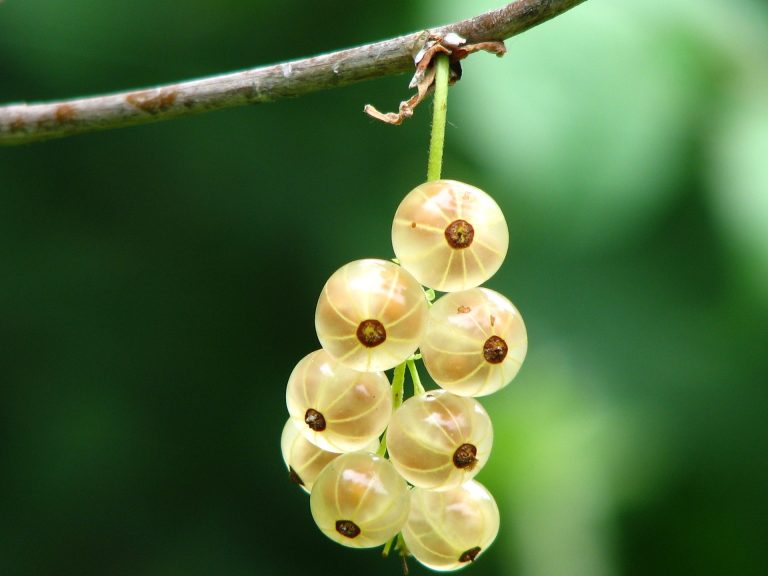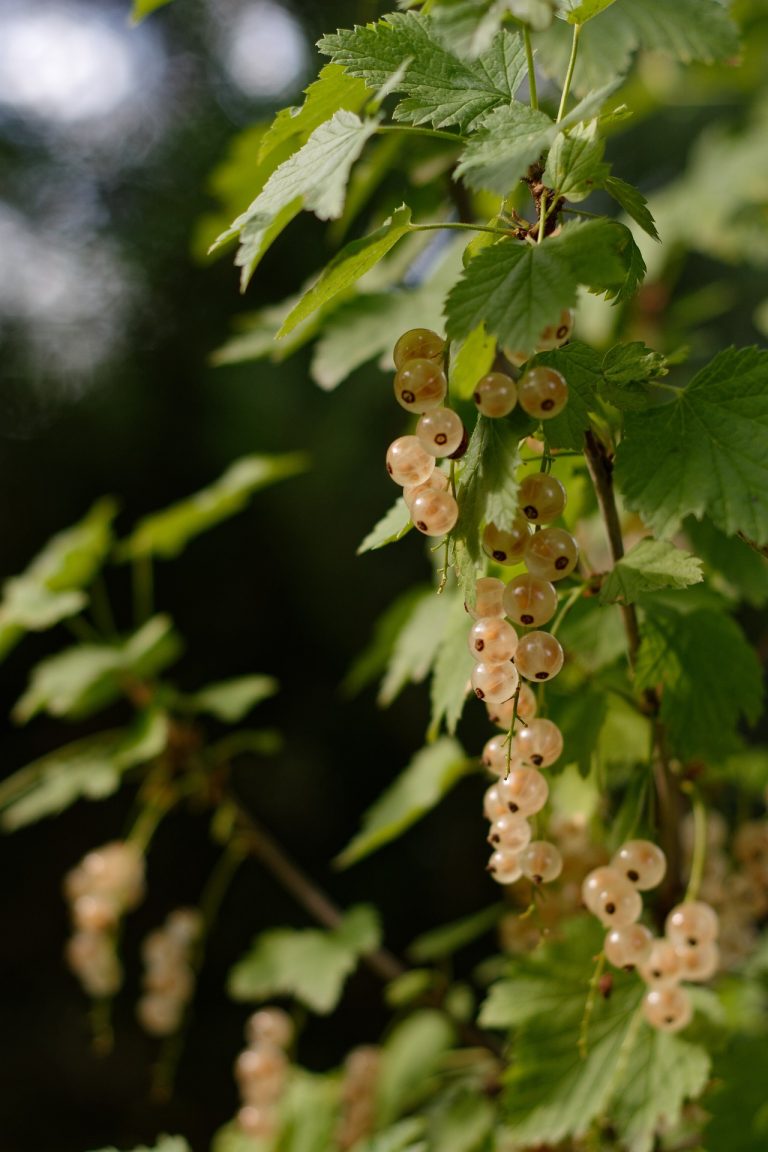Introduction
White currants, often overshadowed by their more popular red and black counterparts, are a delicately flavored fruit that holds a unique place in both culinary and horticultural worlds. These translucent berries, belonging to the genus Ribes, are prized for their sweet-tart taste and versatile uses in various culinary dishes. In this comprehensive article, we explore the botanical characteristics, cultivation practices, nutritional value, culinary uses, and potential health benefits of white currants.
Botanical Characteristics
White currants (Ribes rubrum) are small berries that grow on deciduous shrubs typically reaching heights of 1 to 1.5 meters. They are closely related to red currants (Ribes rubrum), with the primary difference being their color—white currants are pale yellow to translucent white when ripe. The berries are borne in clusters and have a delicate, sweet-tart flavor that distinguishes them from other currant varieties.
White currant bushes are hardy and adaptable, thriving in cool temperate climates with moist, well-drained soil and partial shade. They are commonly found in gardens and orchards across Europe, North America, and parts of Asia, where they are cultivated for both commercial and personal use.

Cultivation
Cultivating white currants requires attention to soil quality, pH levels, and adequate sunlight. These shrubs prefer fertile, well-drained soil with a pH range of 6 to 6.5. They benefit from regular pruning to maintain airflow and prevent diseases. Propagation is typically done through hardwood cuttings taken in late autumn or early winter, which root easily under favorable conditions.
White currants are relatively low-maintenance once established, requiring moderate watering and occasional fertilization during the growing season. They are generally resistant to common pests and diseases but may require protection from birds, which are attracted to the berries.
Nutritional Value
White currants are nutritionally rich fruits, offering a range of vitamins, minerals, and antioxidants. A serving size of approximately 100 grams of white currants provides about 56 calories, 13.8 grams of carbohydrates, 1.4 grams of fiber, and 1 gram of protein. They are a good source of vitamin C, providing over 30% of the recommended daily intake per serving, as well as vitamin A, potassium, calcium, and magnesium.
The antioxidants in white currants, such as flavonoids and anthocyanins (despite their lack of color), contribute to their potential health benefits by combating oxidative stress and inflammation in the body.

Culinary Uses
White currants are prized for their delicate flavor and versatile culinary applications. Unlike red currants, which are often used in jams and preserves due to their tartness, white currants are appreciated for their subtle sweetness and visual appeal. They can be enjoyed fresh as a snack or used as an elegant garnish in salads, desserts, and beverages.
In European cuisines, white currants are commonly used to make syrups, sauces, and coulis that accompany savory dishes such as roasted meats and poultry. They are also favored for their use in desserts, including tarts, cakes, pastries, and fruit salads. White currants’ translucent appearance makes them particularly attractive when used whole or halved to decorate cakes and pastries.
Health Benefits
Beyond their culinary uses, white currants offer potential health benefits due to their nutrient-rich profile:
- Rich in Antioxidants: White currants contain antioxidants like vitamin C and flavonoids, which help protect cells from damage caused by free radicals and may reduce the risk of chronic diseases.
- Support Immune Function: The high vitamin C content in white currants supports immune function by promoting the production of white blood cells and enhancing the body’s ability to fight infections.
- Promote Heart Health: The potassium in white currants helps regulate blood pressure and cardiovascular function, while the fiber content supports healthy cholesterol levels.
- Anti-inflammatory Properties: Some studies suggest that the antioxidants in currants may have anti-inflammatory effects, potentially benefiting conditions such as arthritis and inflammatory bowel disease.
While more research is needed to fully understand the specific health benefits of white currants, their nutrient density and antioxidant properties make them a valuable addition to a balanced diet.

Cultural Significance
White currants hold cultural significance in various regions where they are cultivated. In European countries such as France, Germany, and the United Kingdom, white currants are celebrated for their culinary versatility and are often featured in local desserts and preserves. They are also used in traditional medicine in some cultures for their perceived health benefits, although modern scientific research continues to explore and validate these claims.
Conclusion
In conclusion, white currants are a botanical marvel and culinary delight, cherished for their delicate flavor, nutritional richness, and versatile uses in both sweet and savory dishes. Whether enjoyed fresh from the bush, incorporated into gourmet recipes, or preserved for future use, white currants offer a unique sensory experience that celebrates the bounty of nature.
As interest in locally sourced and sustainable foods grows, white currants remain a valuable addition to home gardens, orchards, and commercial agriculture. Their subtle sweetness, nutritional benefits, and potential health-promoting properties ensure that white currants will continue to be cherished and enjoyed for generations to come, highlighting their enduring appeal in the ever-evolving world of food and nutrition.

